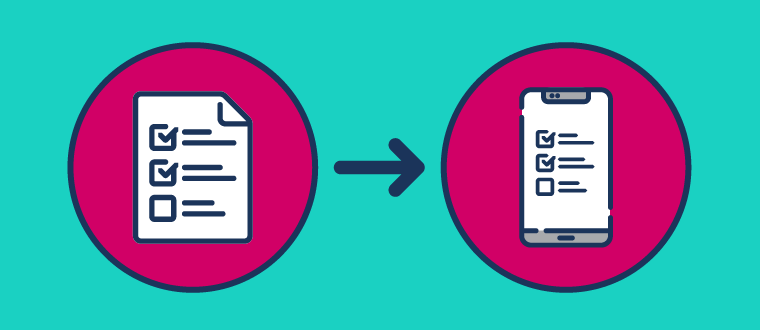Five Ways Task Management Software Can Improve Your Cleaning Business
Move away from pen and paper to move your business forward.
You’re responsible for cleaning multiple sites, and you’ve got a hundred things on your list but don’t know where to start. You’ve got two new employees starting this week. You need to supply evidence for slip and fall claims. Your clients are demanding more in-depth reporting, and your boss wants you to deliver better service with fewer resources. You realise several of your cleaners are not completing simple tasks, and your clients are the first to notice. What processes can you change? How can you standardise tasks and provide performance benchmark? Moving away from outdated processes and pen and paper records is a start. And when you’re ready to put the pen and paper down, there’s a much better way to manage important tasks across your sites. It’s called task management software.
Task management software is essential to ensuring the sites you clean run smoothly and nothing gets missed, ultimately making you look like a hero to your clients and your boss. Think about your current process for managing tasks. It’s surprising how many cleaning contractors are still using notepads, checklists and spreadsheets to manage one-time projects and recurring work.
What happens when something gets missed? Who’s accountable? How does it get tracked? Where is the evidence and data for your clients or boss? Using outdated processes causes headaches for everyone and is a productivity drain for your cleaning company. That’s why we’ve compiled a list of five ways task management software can improve your cleaning business.
1. Standardise task management across your sites.
Task management software allows you to create standardised tasks across multiple sites. This means everyone is working from the same playbook and allows you to better benchmark service between properties. What’s more, training new staff is a breeze because their assigned tasks are available with the swipe of a finger.
Standardising tasks helps ensure your team is delivering the best possible service for your customers.
2. Replace inefficient and inaccurate paper-based processes.
Pen and paper are inefficient. It takes time to write down details, transfer to a system of record, trigger workflows and retrieve the data. How many times do you walk into a public bathroom and see paper tick sheets on the wall? What happens when you want to review this data across sites. It’s nearly impossible. Replace pen and paper with a mobile app, and you’ll get rewarded with a more efficient workforce.
3. Alert cleaners when scheduled tasks are due or not completed.
Get alerts when scheduled tasks, checks or rotations are missed. Remind your team when important tasks are due. Use this data to improve your service delivery over time. Alerts help your site supervisors stay on top of their game and pick up issues before your customers do.
4. Benchmark performance across sites.
Task management software helps you to identify which sites aren’t meeting required service standards. Which sites have a high number of missed rotations or scheduled tasks? Is service improving or declining over time? If you’re an operational manager looking after multiple sites, this gives you a new level of visibility into performance. Furthermore, performance data is available from anywhere at any time.
5. Adjust processes based on site or customer needs.
With task management software, it’s easy to create new processes or adjust existing ones. You can create ad-hoc tasks or new tasks for daily cleaning operations in seconds. You could even let your clients schedule tasks which are automatically allocated to the right employee. It creates a new level of flexibility that allows you to adjust your operations based on site or client needs.
If you’re still using pen and paper and spreadsheets, it’s time to put task management software on the agenda. You can go even further if you put a workforce management solution in place that offers other features critical to operational success. Examples include time and attendance, team communication, incident management and quality audits. A single app and reporting solution can create even more simplicity and efficiency for your company.
